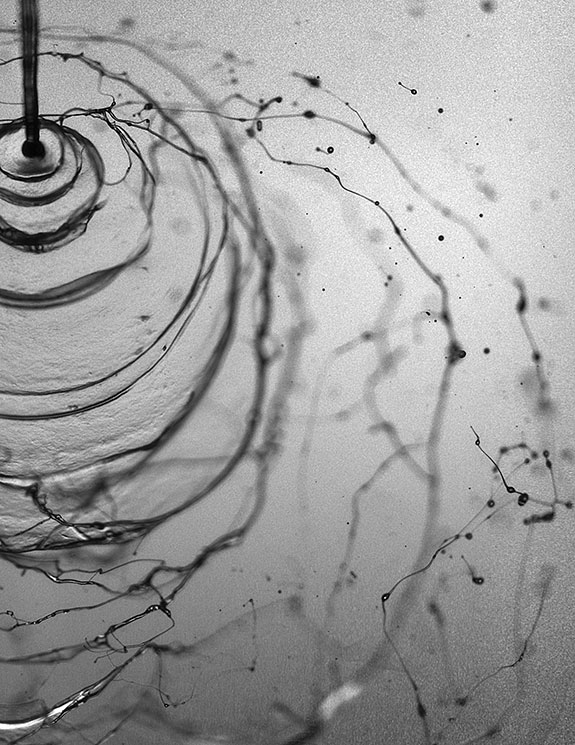Spray Formation of a Gel Using Impinging Jets
Neil S. Rodrigues
Jian Gao
Jun Chen
Paul E. Sojka
M.J. Zucrow Laboratories
School of Mechanical Engineering
Purdue University

Image by N.S.Rodrigues/Purdue and J.Gao/Purdue
Two regimes of impinging jet spray formation using 1.0 wt.-% kappa carrageenan, a water-based gelled propellant simulant, are presented in the images. This image shows the spray pattern at jet Herschel-Bulkley Extended (HBE) generalized Reynolds number Rej,HBE = 1.75E+03. At the lower jet HBE Reynolds number, the influence of the viscous force leads to formation of a distinct sheet and long noodle-like ligaments. At the higher jet HBE Reynolds number, the inertial force dominates, causing the sheet to break up a short distance from the impingement point and the dense formation of short vermicelli-like ligaments. A few large drops are formed from the ligaments at the lower jet HBE Reynolds number, whereas a large number of small drops are formed at the higher jet HBE Reynolds number.
Usage Information
Reporters may freely use these images. Credit: N.S. Rodrigues, J. Gao, J. Chen, P.E. Sojka (2014)
Contact Information
Neil S. Rodrigues
M.J. Zucrow Laboratories
School of Mechanical Engineering
Purdue University
neilrodrigues@asme.org
